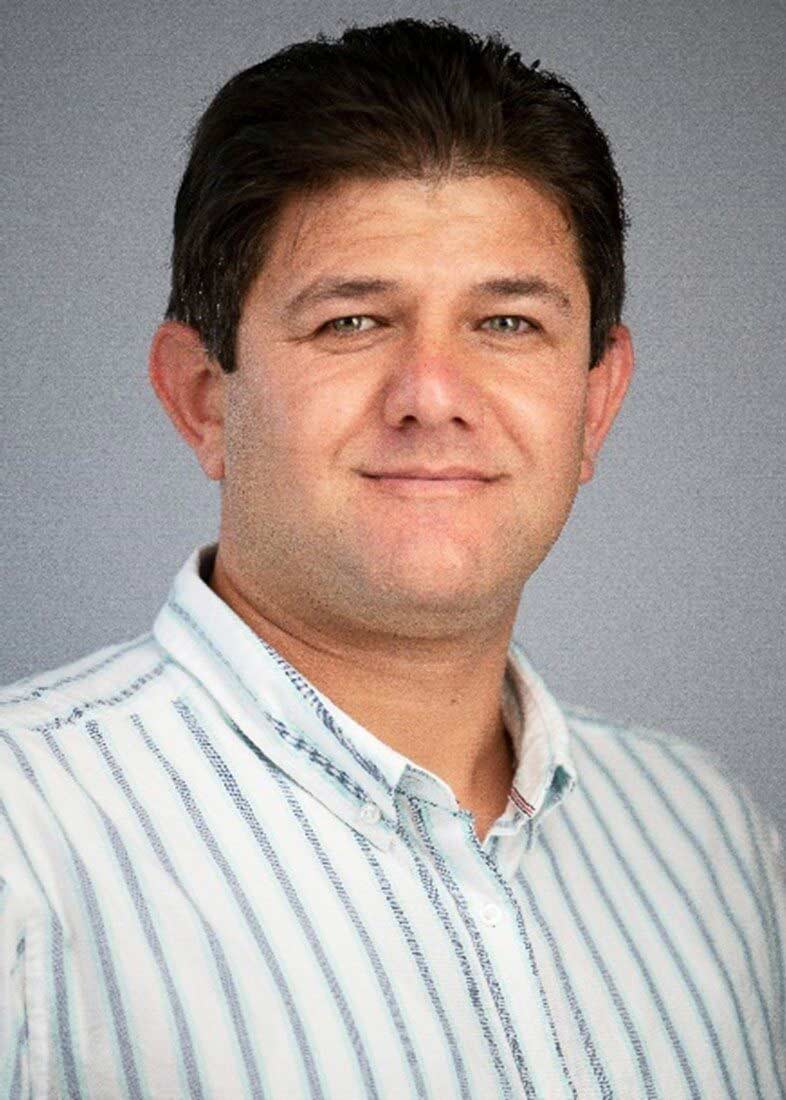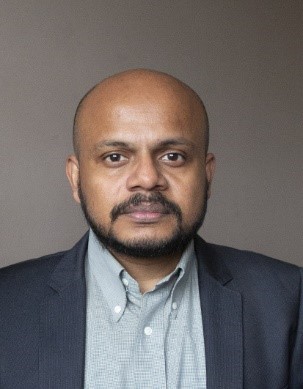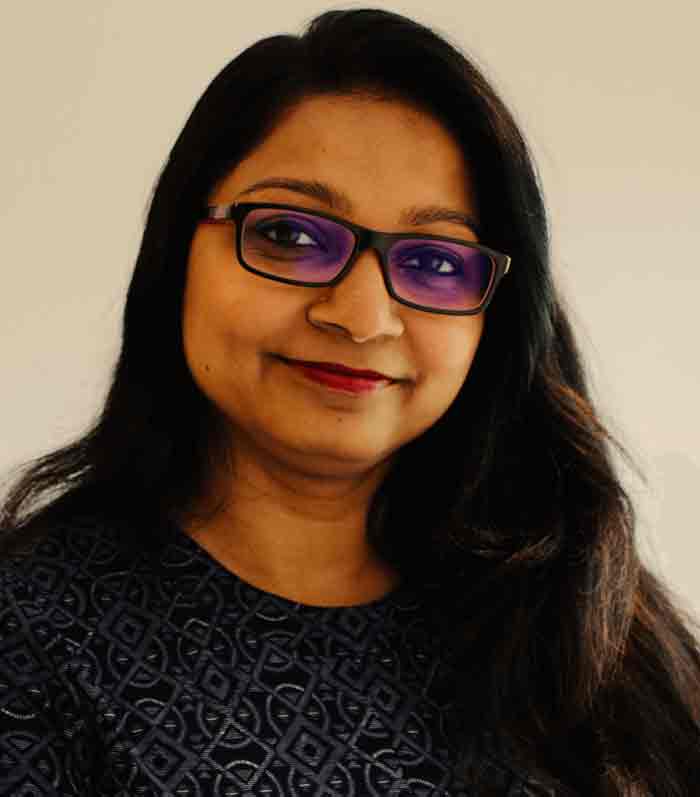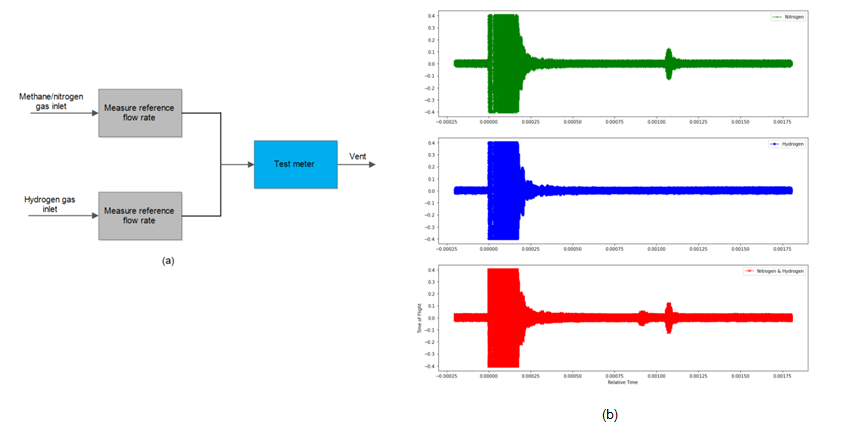Intelligent Sensor Network for Future Fuel Mix Detection and Measurement
Written by Stephen Ugwuanyi, Joseph Melone, Kinan Ghanem, Nishal Ramadas, and Sivapriya M. Bhagavathy
Integrating hydrogen and other unconventional gasses in emerging energy networks will play a major role in the transition to a net-zero energy system. This will also bring significant technical challenges that require an efficient, reliable, and low-cost solution to measure and classify the flow of complex gas mixtures. The inaccuracy of measurement and detection of leakage during production, storage, transportation and refuelling operations can result in serious economic implications and safety risks. These challenges are not limited to resolving the uncertainty in quality control but also encompass efficient flow metering, quality assurance, eliminating measurement errors and integration of the sensor technologies. In this article, we will discuss the challenges of integrating gas measurement and detection technologies and identify potential opportunities for innovation.
Future Fuel Mix
Hydrogen is highlighted to play a major role in energy decarbonisation, especially in the heat sector, heavy-duty vehicles and aero/maritime transport. Building new hydrogen-compatible pipelines or adapting existing facilities for transporting hydrogen is capital-intensive and will consume significant time [2, 3]. Blending enables the continued utilisation of existing gas assets while upgrading the rest of the infrastructure. Maintaining the correct ratio of gases in every specific gas blend is crucial for this transition. When the concentration of hydrogen goes beyond 28% in a mix with natural gas, existing consumers’ appliances may need to be upgraded to remove safety risks to users [1]. This implies that the gas should be monitored at all times and at various parts of the gas network (see Figure 1) to ensure maintenance of the right proportion of fuel mix. The differences in the physical and chemical properties of gases mean that direct use of natural gas measurement and detection technologies for hydrogen or the blend is not practicable.
Figure 1: Intelligent Gas Sensor Network Architecture
For the commercialisation of blended gas and/or hydrogen [2], we need intelligent sensors that can:
- detect the proportion of each gas,
- detect the leakage of gas,
- measure the quantity of each gas flowing through the pipe, and
- send the information both intelligently and securely.
Gas Detection and Measurement
Various sensing technologies has been used to monitor gas networks, and the working mechanisms include optical, quartz crystal microbalance, metal-oxide semiconductors, and conductive polymers [9] to measure the volume consumed. The likes of catalytic, solid state, capacitive, and thermoelectric sensors have low response rates with additional challenges of distinguishing gases like hydrogen from other gases, especially at low frequencies and densities. However, each method has its merits and de-merits with respect to costs, the accuracy of measurements, and applications [10]. Hence, future fuel mix measurement platforms must be designed to provide an end-to-end stack for real-time measurement of fluid properties like flow rate, volumetric, thermodynamic and phase equilibria of fluids based on temperature, pressure, gas concentration, and so on.
Figure 2 (a) & (b). Hydrogen and Nitrogen Mix Detection and Measurement System
Figure 2 (a) shows sample ultrasonic signals captured in a controlled test environment at the TUV-SUD-NEL facility in East Kilbride (Scotland). Various gasses (hydrogen (H2) & nitrogen (N2)) were mixed and flown through a nominal 1 inch pipe with a test meter. As shown in Figure 2 (b), it is evident that the measurement varies significantly based on whether there is pure gas (H2 or N2) or a blend (70% nitrogen and 30% hydrogen, in this case) was flowing through the pipe. However, when the percentage changes in the blend are small, these variations are likely to be small as well. Therefore, simple time-of-flight methods to determine flow and blend percentage might not be sufficient, necessitating advanced sensor technology and associated signal processing/machine-learning algorithms is essential to handle this complex scenario.
Intelligent Sensor Networks Integration
Intelligent sensor networks consist of sensors, processing nodes, and communication interfaces to form an internet of things (IoT) network. The network provides an opportunity to integrate the world of information from the energy infrastructure with intelligent devices and access them remotely through the internet. Gas sensor networks bring new integration challenges that can be broadly categorised into real-time big data processing, energy constraints, security, connectivity, and communication.
- Real-time Big Data processing: Real-time processes and operations in sensor networks for fuel mix detection and measurement will generate large amounts of data. Confined storage in sensor networks means that edge and cloud computing frameworks will be needed to store and process high-volume data in real-time. The data can then be used to trigger specific events and services in the sensor network. For meaningful insights to be gained from big data, it needs to be structured and processed using machine learning (ML) and artificial intelligence (AI) capabilities via reliable communication technology.
- Energy Constraints: Reliable power sources are a critical component of intelligent sensor networks as sensing, storage, communication, and data processing processes at the edge of wireless sensor networks are energy intensive and sensitive to power fluctuations. Improving the energy utilisation efficiency of battery-powered sensors, energy harvesting technology from techniques like fuel flow, vibrations, solar, and radio frequency radiations are needed to overcome energy depletion issues like hotspots [3], communication protocol, connectivity, and data overhead. Energy harvesting or network clustering [4] can improve the lifespan of the sensor network in hard-to-reach areas, but it remains an open research problem.
- Security: Implementing security in sensor networks is always challenging due to processing, memory, bandwidth, and power limitations [5]. Improving the security of wireless networks will result in increased throughput, directly reducing the network’s energy utilisation. However, with lightweight encryption schemes that meet ISO/IEC 29192-2:2012 standards [6], sensor networks with lesser compute and power resources could be better secured to provide security services like availability, authentication, integrity, confidentiality, and privacy offered in 5G [5].
- Connectivity: It is still challenging to expand connectivity to sensor nodes and data centres in resource-constrained sensor networks [7] and maintain the required network’s quality of service (QoS) on data collected, stored, and analysed. Depending on the network’s QoS requirements, the deployment strategy could adopt a mix of short-range (ZigBee, Wi-Fi, Bluetooth) and long-range (LTE, 5G, LoRaWAN) wireless technologies interoperable irrespective of their standard, signalling, bandwidth, and security differences. 5G will be more valuable in sensor network clusters generating large volumes of data with ultra-low latency requirements but will be very expensive due to the significant infrastructure and frequency spectrum.
- Communication: Communication technology ensures connectivity and computational load management of sensor networks. Key wireless technology for intelligent sensor networks includes 5G, narrowband IoT (NB-IoT), long-term evolution for machine (LTE-M), LoRaWAN, SigFox, Wi-Fi, Bluetooth, Zigbee, etc. [8]. They are all suitable for operating sensor networks, but deployment options must be based on their operating characteristics like coverage, energy efficiency, security, mobility support, latency, data rate, penetration, and cost.
Innovation Opportunities
Innovative approaches to integrating hydrogen and renewable energy sources to the grid are extremely important for utilities. A flexible standard planning and integration strategy informed by intelligent sensor networks would help transmission system operators (TSOs) maintain infrastructure integrity. The integrity of the pipes network and fittings determines how fast the material deteriorates, especially when issues such as inaccurate gas blends go undetected for a long time. Innovations in sensor networks improve the accuracy of measurements and the lifespan of infrastructure and should be focused on real-time sensor data acquisition, processing, and transmission.
- Sensors: Acquiring reliable sensor data for fuel mix classification is challenging, given that gas sensors’ accuracy differs in different atmospheric conditions and involves complex chemical reactions such as oxidation, reduction, and absorption. To maintain a balance in the sensitivity and selectivity of the sensors, significant innovation and research effort in the composition of the sensing materials is needed to measure ultrafine dangerous gas particulates [11]. Highly sensitive sensors are needed in hydrogen storage facilities to measure the accuracy and capacity of the storage system based on either compression, liquification, absorption or physical trapping of hydrogen molecules [12].
- Processing Platform: Data processing hardware with multi-function data processing pipeline, AI and ML capabilities will enable data integration from different sensors and standards. Edge computing intelligence-driven innovations for fuel mix measurements will facilitate the extraction of insights and effective classification of gas data through deep neural networks (DNNs) and their offshoots. This means overcoming data availability and model selection challenges of AI implementation at the edge of gas networks [13]. Datasets relating to gas emissions could facilitate policy development and infrastructural planning for energy networks.
- Communication Protocol: Secure and reliable intelligent communication network infrastructure is needed for real-time data display in sensor networks. With wireless technology such as 5G, 4G, LoRa, Wi-Fi, and Bluetooth, remote connectivity and low/high-speed access to edge-processed sensor data will be achieved while maintaining the best possible data and information cyber security practices. In gas detection and measurement, 5G is one example that could enable automated control and monitoring of hydrogen infrastructure where parameters like pressure variations and leakage notifications must be timely and accurately reported.
Conclusion
The growing interest in hydrogen for energy decarbonisation has raised questions about reusing existing gas infrastructure for hydrogen and the complexity of gas blends for transportation and storage. It requires strategic innovations to achieve an efficient, low-cost, and fast response measurement solution able to classify interferences from gas mixtures. Intelligent sensor networks will provide comprehensive surveillance of the energy network for the safety of workers and users with high detection and localisation accuracy useful for gas emission hazard alert systems. This article highlights the need for innovations in sensor network technology for fuel mix measurement and detection in the emerging energy network. The importance of having low-cost intelligent sensors for hydrogen detection and measurements along its value chain (i.e. production, storage, distribution, and end-use) cannot be overemphasised.
Acknowledgement
This article is based on joint research by Hy-Met and PNDC funded by Net Zero Technology Centre. PNDC is supporting Hy-Met in sensor network integration and data analysis to develop a hydrogen measurement platform for use in the energy network of the future. The prototype will be ready for concept trial in 2023.
References
- H. De Vries, O. Florisson, and G. Tiekstra, "Safe Operation of Natural Gas Appliances Fuelled with Hydrogen & Natural Gas Mixtures (Progress Obtained in the Naturalhy-Project)," 2007.
- S. Bhagavathy and J. Thakur, "Green hydrogen: Challenges for commercialization," February-2021, 2022.
- O. I. Khalaf, C. A. T. Romero, S. Hassan, and M. T. Iqbal, "Mitigating hotspot issues in heterogeneous wireless sensor networks," Journal of Sensors, vol. 2022, 2022.
- L. Gashi, A. Luma, and Y. Januzaj, "The integration of Wireless Sensor Networks, Mobile Networks and Cloud Engineering for a decision support system-A Systematic Literature Review," in 2022 International Congress on Human-Computer Interaction, Optimization and Robotic Applications (HORA), 2022: IEEE, pp. 1-8.
- L. Dash and M. Khuntia, "A survey on various security issues for 5G mobile networks in WSN," in Intelligent and Cloud Computing: Springer, 2021, pp. 669-679.
- T. K. Goyal, V. Sahula, and D. Kumawat, "Energy efficient lightweight cryptography algorithms for IoT devices," IETE Journal of Research, vol. 68, no. 3, pp. 1722-1735, 2022.
- A. Ghosh and S. K. Das, "Coverage and connectivity issues in wireless sensor networks: A survey," Pervasive and Mobile Computing, vol. 4, no. 3, pp. 303-334, 2008.
- M. Y. Aalsalem, W. Z. Khan, W. Gharibi, M. K. Khan, and Q. Arshad, "Wireless Sensor Networks in oil and gas industry: Recent advances, taxonomy, requirements, and open challenges," Journal of network and computer applications, vol. 113, pp. 87-97, 2018.
- Y.-C. Hsieh and D.-J. Yao, "Intelligent gas-sensing systems and their applications," Journal of Micromechanics and Microengineering, vol. 28, no. 9, p. 093001, 2018.
- T. Koturbash, A. Bicz, and W. Bicz, "New instrument for measuring the velocity of sound in gases and quantitative characterization of binary gas mixtures," Pomiary Automatyka Kontrola= Measurement Automation and Monitoring, vol. 65, no. 08, pp. 254-258, 2016.
- H. Particles, "Understanding the health effects of ambient ultrafine particles," HEI Perspectives, vol. 32013, 2013.
- A. Davoodabadi, A. Mahmoudi, and H. Ghasemi, "The potential of hydrogen hydrate as a future hydrogen storage medium," Iscience, vol. 24, no. 1, p. 101907, 2021.
- S. Deng, H. Zhao, W. Fang, J. Yin, S. Dustdar, and A. Y. Zomaya, "Edge intelligence: The confluence of edge computing and artificial intelligence," IEEE Internet of Things Journal, vol. 7, no. 8, pp. 7457-7469, 2020.
This article was edited by Jose Medina.
To view all articles in this issue, please go to January 2023 eBulletin. For a downloadable copy, please visit the IEEE Smart Grid Resource Center.

Stephen Ugwuanyi (IEEE M’16) received a B.Eng. in electronic engineering from University of Nigeria in 2011. In 2016, he received a M.Sc. in communication, control and digital signal processing from the University of Strathclyde, Glasgow, United Kingdom, where he is currently completing a Ph.D. in internet of things for industrial devices under the sponsorship of the Petroleum Technology Development Fund (PTDF), Nigeria. Since 2018, Stephen has supported the delivery of research projects at PNDC, where he now works as an R&D Engineer within the communications, systems integration and cyber security research themes. His research interests include integrating and securing wireless technologies, industrial IoT systems, and sensor networks for energy systems to provide real-world results in emerging IoT, wireless and communication technologies, cyber security, and power utility networks.

Joseph Melone received a B.Sc. Degree in Physics and Astronomy and a Ph.D. degree in Experimental Nuclear Physics from the University of Glasgow, in 2000 and 2005 respectively. Since 2014, he has worked as an R&D engineer at PNDC, an industry-facing innovation hub affiliated with the University of Strathclyde where the focus is on power transmission and distribution networks and the industry drive to make these vital systems smarter, more flexible and reliable in a future Net Zero economy. His research interests include integrated energy systems, power system and power electronics modelling, and the use of IoT technologies to realise remote monitoring and control of interconnected systems within the energy sector.

Kinan Ghanem (member of IET, CEng, and Senior Member IEEE) received his BEng, MEng and PhD degrees in Electrical and Electronics Engineering from Tishreen University, Syria in 2000, 2004 and 2014 respectively. In 2006, Kinan completed his Master of research Electromagnetics in the analysis and design of communications and high-speed systems from the Electrical and Electronic engineering, Nottingham University, Nottingham, UK. Kinan has been working at the PNDC in Glasgow since April 2017. He has about two decades of work experience in different communication technologies in both academia and industry. He is currently working as a senior communication and systems integration engineer and is leading activities in communication, systems integration, and cyber security at PNDC. Kinan has significant knowledge in teleprotection and communications within power networks. His research interests include various communication solutions for smart grid, mainly IoT & M2M technologies, Tele-protection, LAN, satellite communications, MPLS networks, mobile networks, and security techniques.

Nishal Ramadas is an experienced engineer working in the field of ultrasonic instrumentation with a special interest towards developing advance transducers/systems with predictive analytics capabilities. Nishal recently founded two startups: Hy-Met Limited (developing instrumentation/software solutions to enable energy transition in the UK) and Azeriri Pvt. Ltd. (an ultrasonics transducer/system OEM in Chennai, India). Nishal previously held leadership roles at Elster Metering Limited/Honeywell in the UK, Germany, and Belgium. During his time in the industry, Nishal was also an honorary visiting academic and a Marie Curie Research Fellow at the University of Warwick (2011-2021). Prior to that, Nishal held post-doctoral positions at Southampton & Strathclyde University and started his career as an Associate Systems Engineer at Tata Infotech Limited (Bangalore). He holds a bachelor’s degree in Medical Electronics from Bangalore University, a MSc/PhD in EEE from the University of Strathclyde, and a PG Diploma in Management/Administration from Warwick Business School.

Sivapriya M. Bhagavathy (Senior Member, IEEE) received a B Tech degree in Electrical and Electronics Engineering from the University of Kerala in 2006, M Tech in Energy Systems Engineering from Indian Institute of Technology, Bombay in 2008, and a Ph.D. in Electrical Engineering from the Northumbria University in 2018. She is a Lead R&D Engineer (Whole Energy System) at PNDC, University of Strathclyde, and a visiting researcher at the University of Oxford. Her research interests include distributed generation and its grid integration, whole system perspective of energy analysis, multi-vector demand-side management, the role of hydrogen in the multi-vector energy system, energy policy, evaluation of government intervention, electric vehicles as load and storage, and electric vehicle infrastructure planning.
To have the Bulletin delivered monthly to your inbox, join the IEEE Smart Grid Community.
Past Issues
To view archived articles, and issues, which deliver rich insight into the forces shaping the future of the smart grid. Older Bulletins (formerly eNewsletter) can be found here. To download full issues, visit the publications section of the IEEE Smart Grid Resource Center.






